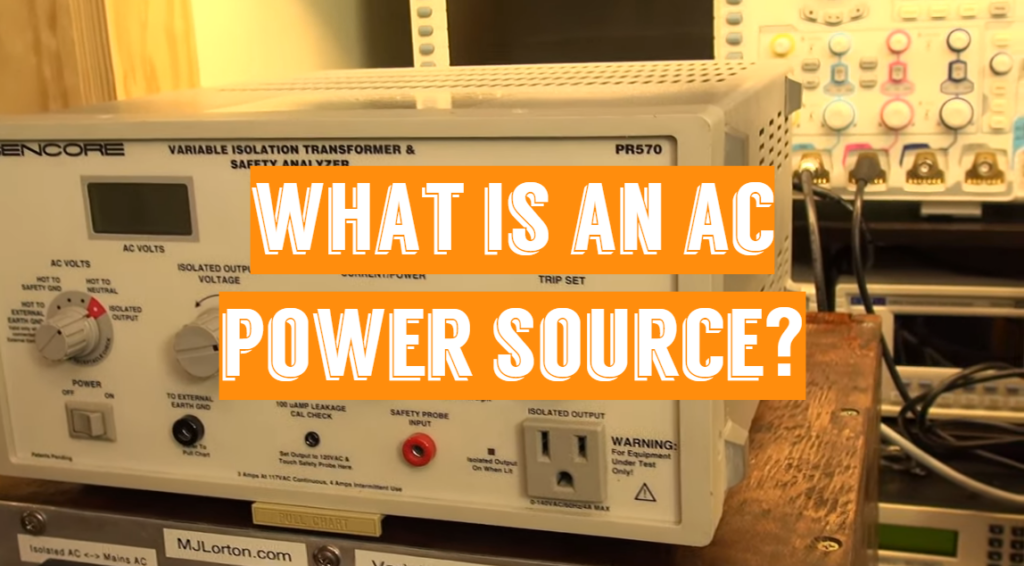A power supply is an electrical system that transforms electric current from a power source, such as the mains, into the voltage and current values used to power a load, such as a motor or electronic device.
The power of a power supply is to provide the correct voltage and current to the load. The current must be delivered to a broad variety of loads in a regulated fashion — and at an accurate voltage — at times concurrently, without allowing variations in the input voltage or other attached devices to influence the performance.
External power supplies are used in devices like phone chargers and smartphones, whereas internal supplies are used in bigger devices and personal computers.
Related Review: Best Bench Power Supplies
It is possible to provide a controlled or unrestricted power supply. Variations in the input voltage have little effect on the performance of a controlled supply. In an uncontrolled power supply, on the other side, the performance is affected by fluctuations in the input. Both supply types have one feature in common: they take electric power from a source at the input, convert it, and supply it to the load at the outlet.
Alternating and direct current power sources
Direct current (a.k.a. DC) or alternating current (a.k.a. AC) power can be at the input and output:
- DC. As current flows in a single direction, it is called direct current (DC). Batteries, solar panels, and AC/DC converters are the most common sources. For electronic equipment, DC is the chosen source;
- AC. If an electric current inverts its path on a regular basis, it is known as alternating current (AC). AC is the method of delivering electricity to homes and businesses through power transmission lines;
As a result, if AC is the form of power supplied to your home and DC is the type of power you use to charge your cell, you would use an AC/DC supply to transform the AC voltage from the electricity network to the DC voltage used to charge your phone’s battery.
Definition of an AC power source
So, what is an AC power source? An AC power source also referred to as a power supply, it is a system that can supply a load with adjustable power and frequency.
An AC source generates an alternating electrical current that can be used to power or test a different piece of hardware by replicating electrical grid interruptions, harmonics, spikes, and other occurrences that could trigger a system under test to fail.
A sine wave is the form of AC power. The most popular residential electrical grid in North America is a single 60 Hz 120VAC system. The grid in Europe runs at 50Hz and 230VAC.
An AC supply normally takes the voltage from an outlet (mains supply) and steps it up or down to the required voltage using a transformer. There might be some filtering as well. An isolation transformer is a device in which the source voltage and output voltage are the same.
Any AC supply transformers don’t have mains isolation; these are regarded as autotransformers, and a variac is a variable performance autotransformer.
Other types of AC power supplies are made to deliver a relatively constant current, with output voltage varying based on the load impedance. Where the source is direct current (such as a car battery), an inverter and step-up converter can be used to turn it to alternating current (AC).
An alternator operated by a diesel/gasoline engine (for example, at a building site, in a car or boat, or as a backup generator for emergency services) may provide portable AC power through passing the current through a regulator circuit to provide a steady voltage at the outlet. A transformer is not needed for certain types of AC conversion. A line conditioner is a system that has the same output voltage as the input voltage and is primarily used to filter AC power.
An uninterruptible power supply (UPS) is a system that is intended to offer a backup. A voltage multiplier topology may be used to explicitly step-up AC power in a circuit; a vacuum tube AC/DC receiver was once an example of this.
Types of AC power supplies
AC supplies are split into single-phase and 3-phase networks in current use. The main distinction between single-phase and three-phase AC power is distribution consistency. Manufacturers also use AC supplies to test the suitability of their goods for use in other countries so they may adjust the frequency as well as the voltage. For avionics research, use 230 V 50 Hz, 115 60 Hz, or even 400 Hz.
A power supply installed into an AC mains power socket is known as an AC adapter. Other titles for AC adapters include “switch kit” and “plug-in adapter,” as well as slang words including “wall wart.” AC adapters usually provide a single AC or DC outlet that is sent to a socket through a hardwired cable, although some adapters have several outputs that can be transmitted via one or more cables. The input connections on “universal” AC adapters may be swapped out to match various AC mains voltages.
Adapters with AC outputs may use either a passive transformer (including few diodes in DC-output adapters) or switch-mode circuitry. AC adapters absorb power (and emit electric and magnetic fields) even though they are not attached to a load; as a result, they are often referred to as “electricity vampires.” They may be wired into power strips to make it easier to switch them on and off.
AC Power Source Example
Electrical testing with AC sources like the IT7321 source units is standard in aircraft, illumination, laboratory monitoring, military, and factory manufacturing. This AC source helps to produce alternating current signals ranging from 45Hz to 500Hz.
It can also produce various types of sine waves, such as surges, traps, and dimmed phase waves, to simulate various events.



